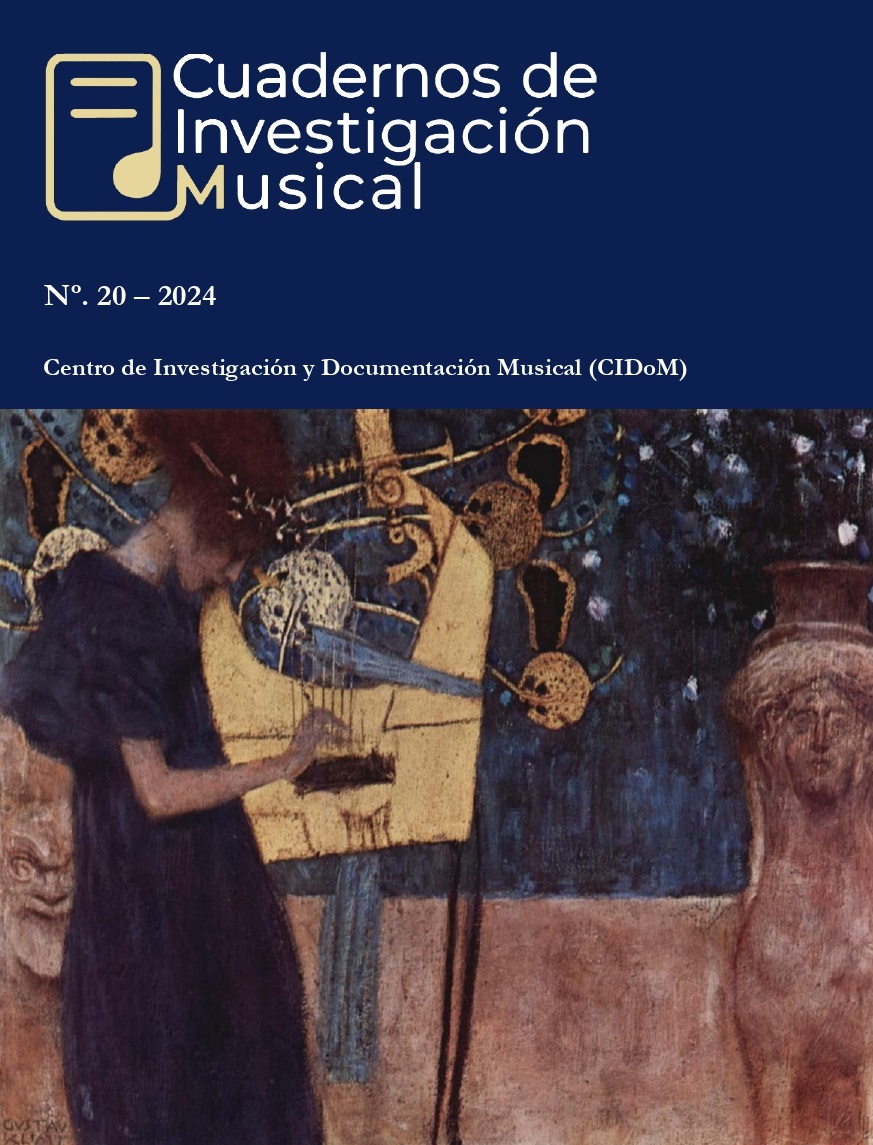Musical composition and interiority of the instrumental resource
Main Article Content
Abstract
The progressive distancing of music and art from certain reference frameworks since the late 19th century led to their gradual turning towards its own resources for artistic production, towards a kind of interiority. In music, certain contradictions arise when, in attention to sound, the operation involves an approach to acoustics, electronics, and computing, that is, a deconfinement of the limits of the musical field itself. Through a look at the work In Basso, the following text presents an approach to musical composition based on attention to instrumental resources and their acoustic characteristics, exploring practical possibilities to generate a relationship between resource and musical discourse. The contradictions and aesthetic consequences of an artistic act that seems to distance itself from creative subjectivity are also evaluated.
Article Details

This work is licensed under a Creative Commons Attribution-NonCommercial-NoDerivatives 4.0 International License.
Los autores de los artículos mantienen el copyright, no recibirán ninguna contraprestación económica por el trabajo y el mismo siempre será reconocido como exclusivamente suyo. La revista se compromete a proteger la integridad y originalidad del artículo, así como los derechos de autor que correspondan. Los autores son los únicos responsables del material, textos e imágenes que utilizan en sus respectivos trabajos, debiendo respetar siempre los derechos de autor de terceras personas, por lo que la revista no se hace responsable de lo contenido en este tema respecto al trabajo de los autores.
References
Adorno, Th. W. (2011). Teoría Estética. Madrid: Ediciones Akal.
Arnott, J. (2014). Recorders and electronics: An Introduction to the Performance of Electroacoustic Music (Tesis de Máster). Sydney: Music University of Sydney.
Bianchini, R. & Cipriani, A. (2001). Il Suono Virtuale. Roma: Con tempo Ed.
Blackburn, A. (2023). Performing australian electroacoustic works for the Paetzold contrabass recorder. Tempo, 77(304), pp. 21-32.
Cabo, I. M. (2021). Estudio de la impedancia acústica de entrada y la directividad del resonador de un clarinete. Análisis numérico por medio del método de elementos finitos (Tesis de Máster). Valencia: Universidad Politécnica de Valencia.
Cadoz, C. (1998). Instrumental Gesture and Musical Composition. ICMC 1988. En Proceedings of the International Computer Music Conference, Feb 1988, Cologne, Germany (pp. 1-12). San Francisco: International Computer Music Association.
Cornicello, A. (2000). Timbral Organization in Tristan Murail’s Désintégrations (Tesis de Doctorado). Waltham: Universidad Brandeis.
Cook, P. (1992). A Meta-Wind-Instrument Physical Model, and a Meta-Controller for Real Time Performance Control. En Proceedings of the International Computer Music Association (pp. 273-276). San Francisco: International Computer Music Conference.
Duchez, M. E. (1990). L’évolution scientifique de la notion de matériau musical. En Ch. Bourgois (Ed.) Le Timbre, Métaphore pour la composition (pp.- 47-81). París: IRCAM.
Güsewell, A. (2008). Entre enseignement et recherche. Flûtes à bec carrées Paetzold au Conservatoire de Lausanne. Schweizer Musikzeitung, 5, pp. 15-22.
Martin, J. (1994). The Acoustics of the Recorder. Celle: Moeck Ed.
Pressnitzer, D. & McAdams, S. (2000). Acoustics, psychoacoustics and spectral music. Contemporary Music Review, 19(2), pp. 33–59. https://doi.org/10.1080/07494460000640251
Rojas, S. (2012). El arte agotado. Santiago de Chile: Sangría editora.
Schultz, M. (2007). Modelos imaginarios. Santiago de Chile: Ediciones Radio Universidad de Chile.
Smith, J. O. (1996). Discrete-Time Modeling of acoustics Systems with Applications to Sound Synthesis of Musical Instruments, Proceedings of the Nordic Acoustical Meeting, pp. 21-32.
Vetter, M. (1964). Il flauto dolce ed acerbo. Lückenweg: Moeck Verlag.
Walsh, S. (2020). Debussy. Un pintor de sonidos. Barcelona: Acantilado.
Yazdani, A. (2012). An acoustical approach toward composition (Tesis de Doctorado). Stockholm: The Royal College of Music in Stockholm.
